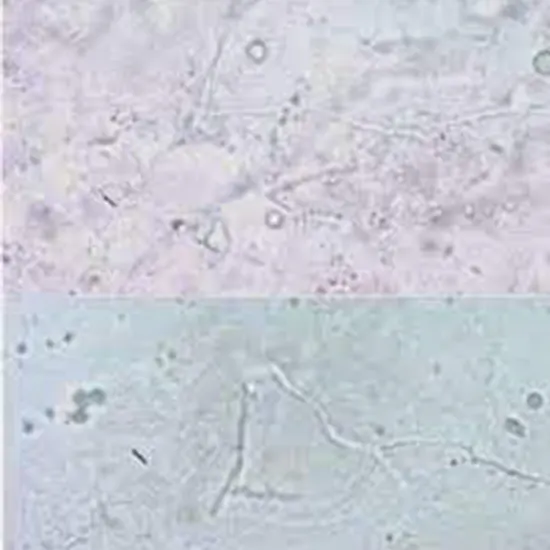
Book Bone Marrow Fungus Examination KOH Preparation Appointment Online Near me at the best price in Delhi/NCR from Ganesh Diagnostic. NABL & NABH Accredited Diagnostic centre and Pathology lab in Delhi offering a wide range of Radiology & Pathology tests. Get Free Ambulance & Free Home Sample collection. 24X7 Hour Open. Call Now at 011-47-444-444 to Book your Bone Marrow Fungus Examination KOH Preparation at 50% Discount.
Procedure
Using 80 ml of distilled water, dissolve 66 g of 85% KOH pellets or 56 g of anhydrous KOH. Cool and then dilute to 100 ml.
The chemical potassium hydroxide (KOH)-containing liquid is added. Next, a microscope is used to inspect the slide. KOH aids in the dissolution of several biological components.
A quick test called the skin lesion KOH exam aids medical professionals in finding fungal infections on a patient's skin, hair, and nails. During a KOH exam, doctors take a skin scraping, immerse it in a potassium hydroxide (KOH) solution, and then examine the sample under a microscope.
A reagent called Remel 10% Potassium Hydroxide is advised for use in qualitative techniques to identify fungal components in clinical specimens by microscopic analysis. For the direct detection of fungal elements in clinical samples, 10% KOH is advised by the Laboratory Handbook of Medical Mycology.
0.1N Potassium hydroxide preparation
It was manufactured by mixing 5.6 grams of potassium hydroxide, precisely weighed, with 1000 milliliters of distilled water in a standard volumetric flask.
Pellets of potassium hydroxide weighing 112.22 grams should be added to the flask. Due to the exothermic process, the water will get hot (This is the reason for the cold tap water in the bucket to cool down the solution). To completely dissolve the pellets, turn on the stir plate and vigorously mix.
To avoid a reaction with carbon dioxide that would result in potassium carbonate and water, KOH should be made freshly. As a result, the experiment won't produce accurate findings.
A KOH examination can identify these signs of fungal infection: Deformed, thickened, or brittle nails. Scaly, red, itchy spots on the scalp or skin. Thrush (white patches in the mouth) (white patches in mouth)
| Test Type | Bone Marrow Fungus Examination KOH Preparation |
| Includes | Bone Marrow Fungus Examination KOH Preparation (Pathology Test) |
| Preparation | |
| Reporting | Within 24 hours* |
| Test Price |
₹ 400
|

Early check ups are always better than delayed ones. Safety, precaution & care is depicted from the several health checkups. Here, we present simple & comprehensive health packages for any kind of testing to ensure the early prescribed treatment to safeguard your health.